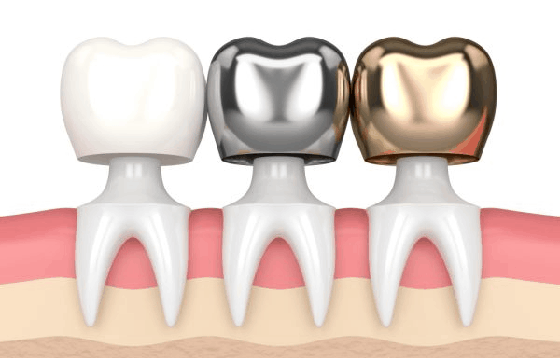Crowns and Bridges
Dental crowns and bridges are among the most popular oral restorations used to restore damaged and missing teeth, respectively. A crown is often called a dental cap as it covers a tooth in its entirety. It is commonly used to treat teeth that are weak, cracked, worn out, chipped, etc. Bridges are used as a replacement for natural teeth that are extracted due to external trauma, cavities, malocclusion, etc.
Why should you choose crowns?
Crowns are fabricated from a ceramic material that can be customized to match the shape and color of the natural teeth. They offer unmatched aesthetics and keep the restoration under disguise.
They can be used for several restorative purposes. Dentists use crowns to treat teeth that are cracked, chipped, worn out, or weak due to a root canal procedure.
They wouldn't add a lot of volume to the existing tooth structure. Also, the crown restores the functionality of the tooth and makes it stronger.
Advantages of dental bridges
- Dental bridges prevent the drifting of teeth from their positions. When a tooth is extracted, a gap will be left in the mouth, which the remaining teeth tend to occupy. When a bridge is used to replace the missing tooth, it fills the gap and prevents the movement of the teeth.
- They are made from a dental-grade ceramic material that is strong, durable and behaves, just like a real tooth in terms of aesthetics and functionality. They look exactly like natural teeth, and anyone who looks at you, talk, or smile wouldn't have the faintest idea that it is a prosthetic tooth.
- Bridges would last for several years with proper care. Brushing twice a day would prevent the accumulation of plaque and tartar on them, allowing them to stay as good as new for a long time.
